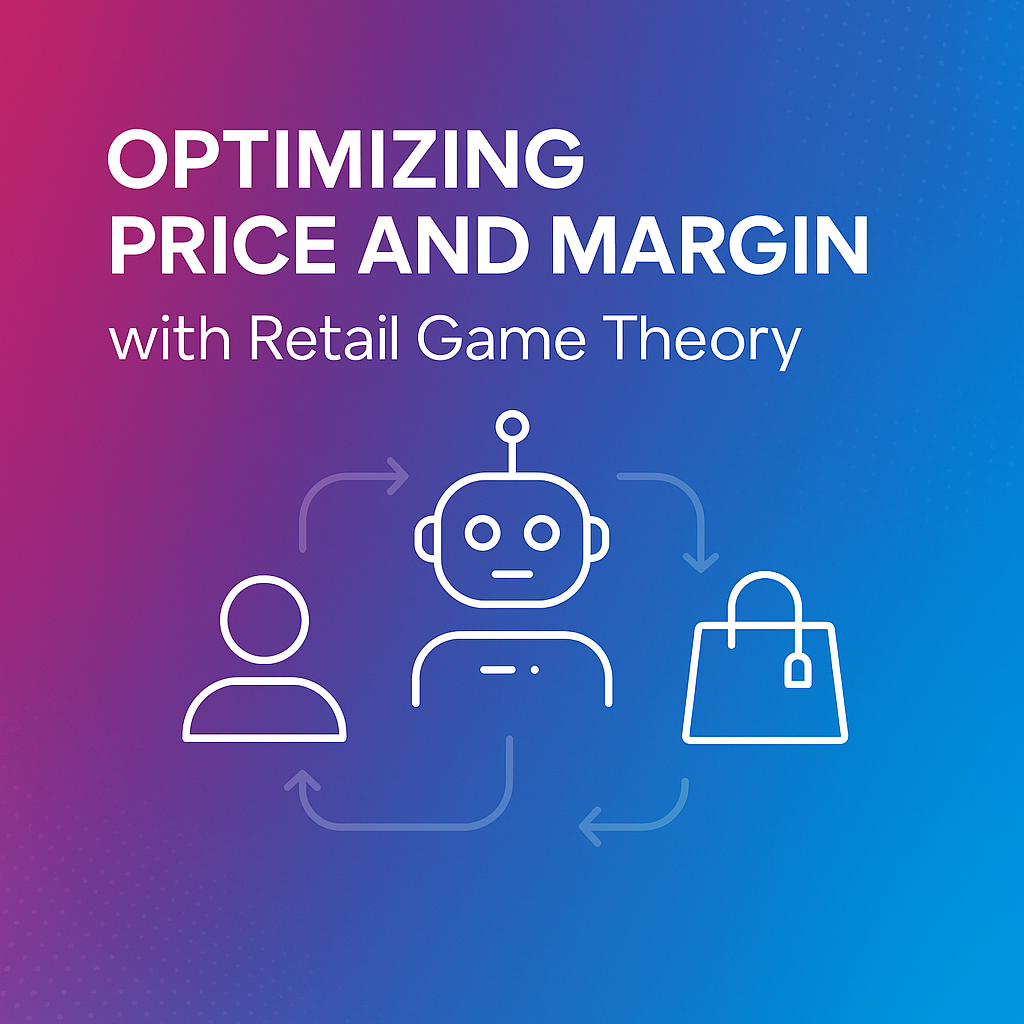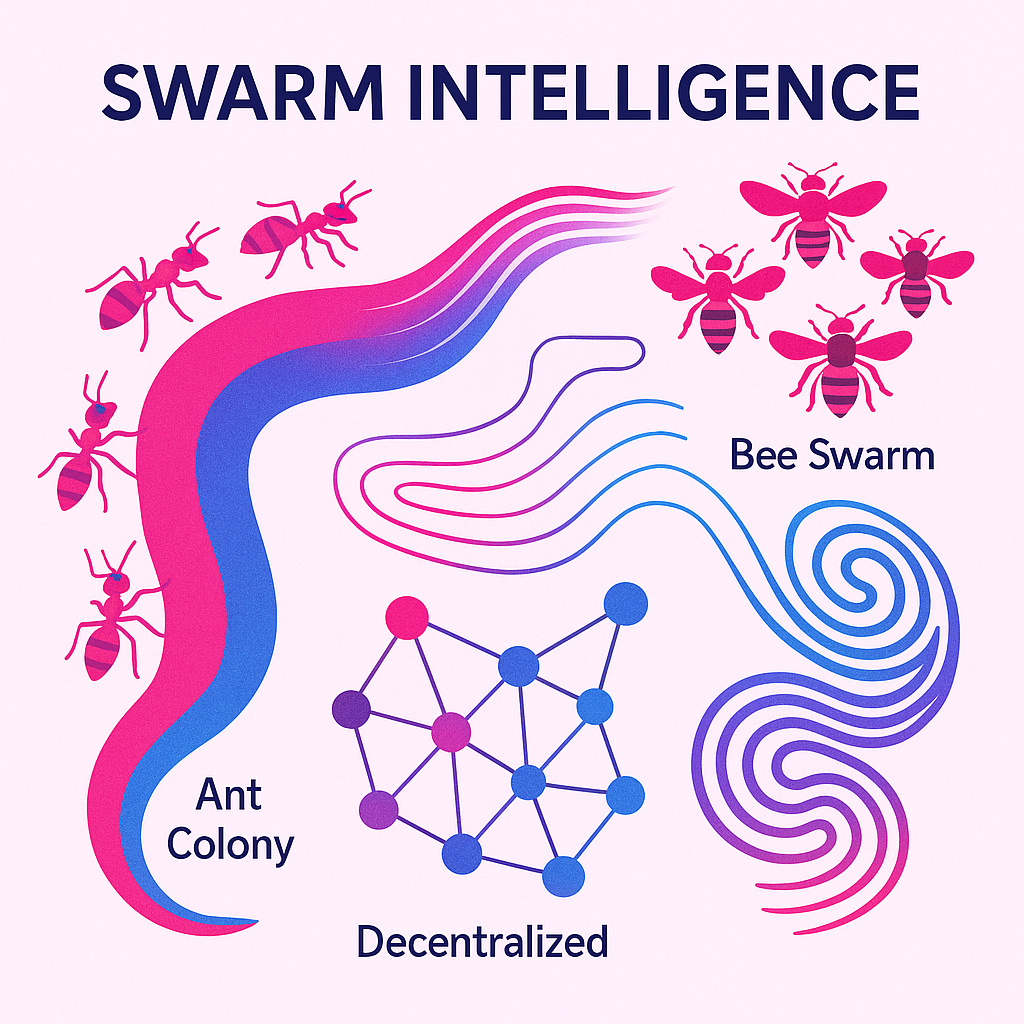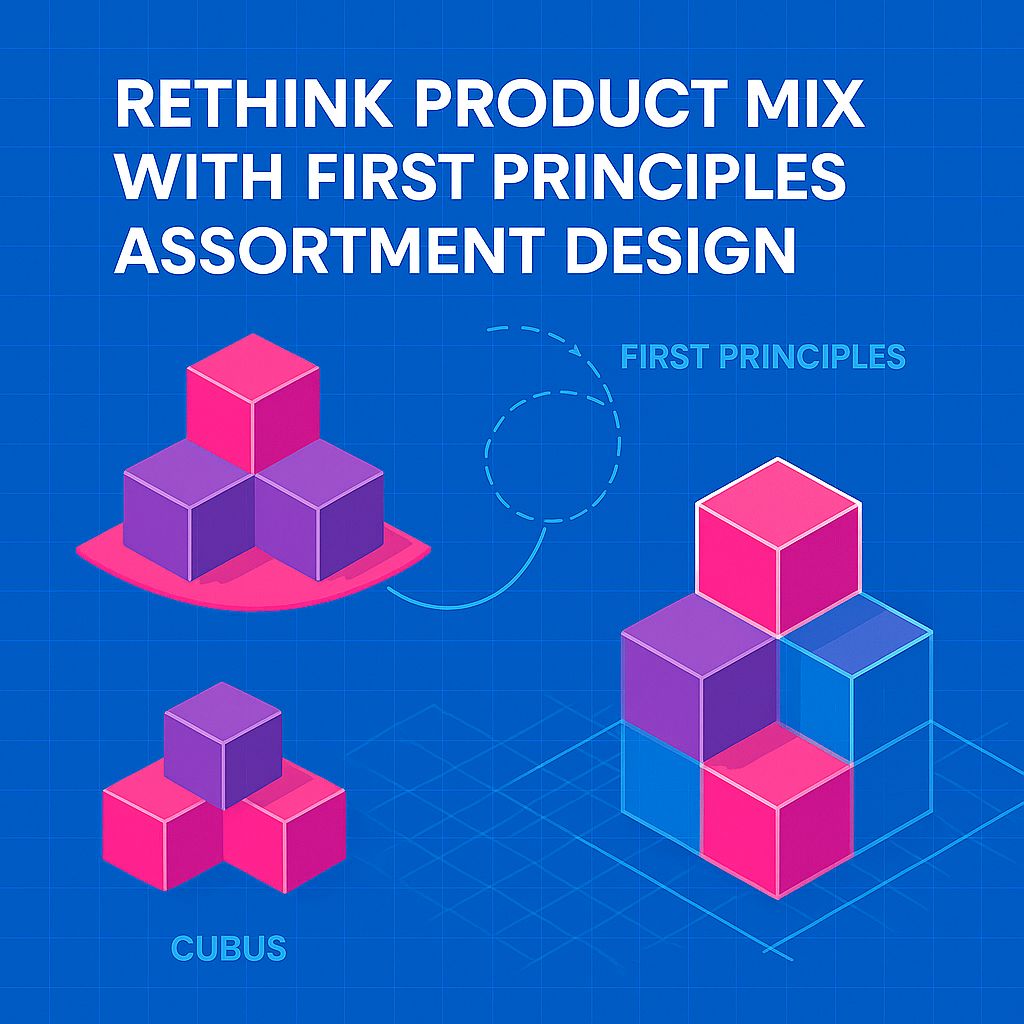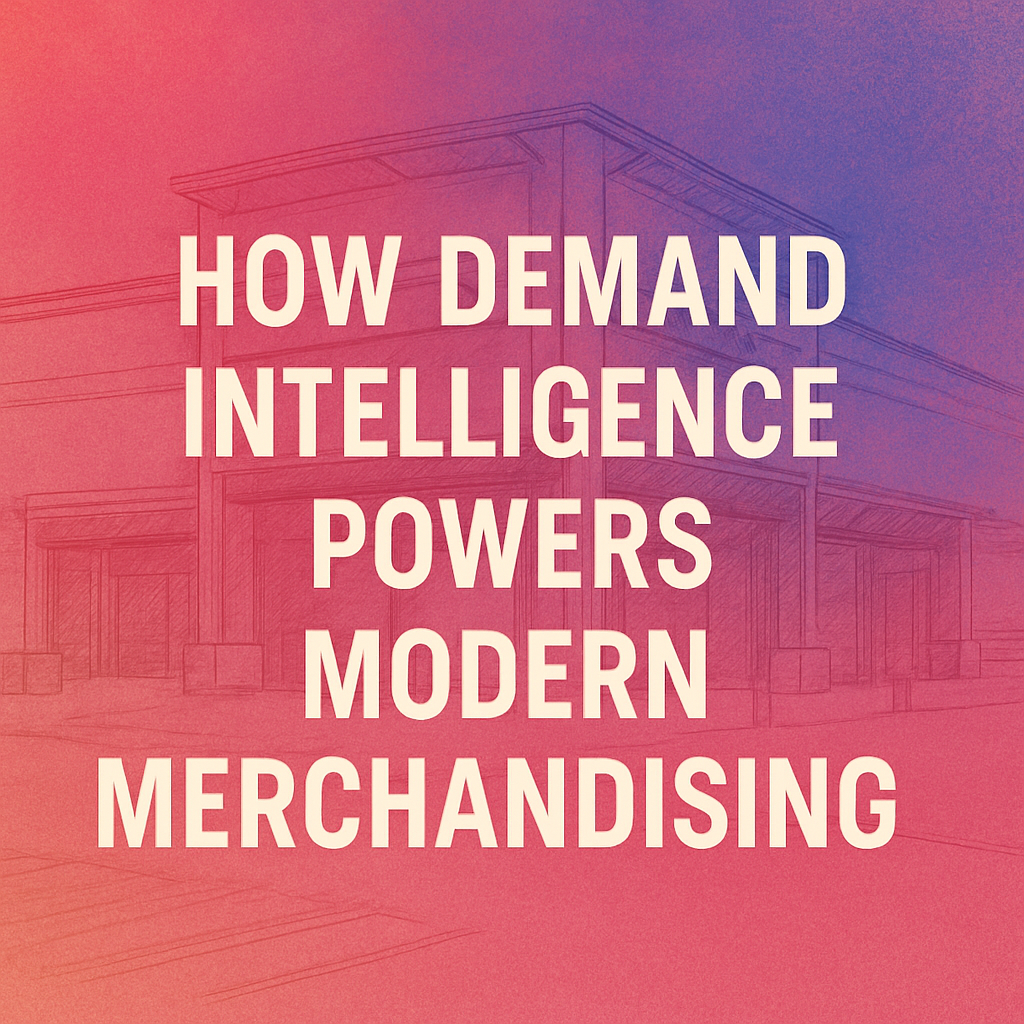Optimizing Price and Margin with Retail Game Theory

In today’s hypercompetitive retail environment, margin erosion is often not the consequence of declining customer demand but the result of strategic missteps. One of the most insightful models to understand these dynamics is the Prisoner’s Dilemma, a classic framework in game theory. While originally rooted in abstract economics, the Prisoner’s Dilemma manifests everywhere in retail: aggressive promotions, endless discounting, and excessive assortment all exemplify what happens when companies act rationally in isolation but achieve collectively inferior outcomes. This strategic trap underscores the growing relevance of retail game theory in harmonizing decisions around pricing, promotions, and inventory.
Retailers have traditionally relied on internal sales data shelf pulse to guide decisions. However, when each competitor follows the same internal playbook, it fuels a cycle of mutual defection. Demand science, anchored in outside-in analytics, now offers the opportunity to shift that equilibrium. By incorporating broad market signals and applying principles of retail game theory, players can align strategies, protect margins, and improve revenue without sacrificing consumer loyalty.
Understanding this landscape is mission-critical for retail executives, category managers, and retail data strategists. This blog explores how applying retail game theory, especially the Prisoner’s Dilemma, in conjunction with demand science can fundamentally improve retail decision-making models and enhance financial outcomes.
What Is Retail Game Theory?
Retail game theory is the strategic application of game theory principles to the retail industry. At its heart lies the Prisoner’s Dilemma in retail, a situation where brands or retailers make pricing or promotional decisions based on incomplete competitive intelligence, often to their long term detriment. While each move seems rational in isolation, the collective result is slashed margins and weakened category profitability.
Strategically applied, retail game theory enables merchants and pricing leaders to identify dominant strategies, anticipate competitive behavior, and adopt cooperative models, not necessarily with competitors, but with consumer intent.
The Prisoner’s Dilemma in Retail: A Deeper Look
The original Prisoner’s Dilemma showcases a matrix in which mutual cooperation delivers better outcomes than mutual betrayal, though rational actors often default to betrayal (or in retail, aggressive promotions). In retailing terms, this often surfaces in three core areas:
1. Price Wars: One retailer discounts first, fearing loss of traffic. Rivals match or undercut the price. The result? Eroded margins across the board.
2. Promotional Overload: Weekly flyers boom with promotions, yet two-thirds result in zero net category volume increase, according to McKinsey research [EXTERNAL LINK: “promotions that build brands” – McKinsey article on retail promotion strategy].
3. Over-Assortment and SKU Sprawl: Sellers flood categories with overlapping SKUs, driven by the assumption that sheer breadth wins. Instead, it causes search fatigue and drives down conversion.
In each scenario, the cost of acting defensively without understanding actual consumer demand is high. Retailers unintentionally enter a loop where promotions increase, prices fall, and margin pools shrink.
Demand Science as an Exit Strategy
To escape the retail version of this strategic trap, retailers must embrace demand science—a field blending consumer analytics, market intelligence, and AI-driven forecasting. Demand science shifts strategic alignment by offering a panoramic, outside-in view of what real shoppers want, independent of current or past sales trends.
For organizations caught in cycles of defensive pricing, demand science helps break the pattern using these five analytical pillars:
1. Always-On Data Capture: Real-time data from search, social media, video, and visual platforms forms a dynamic model of consumer interest across geographies.
2. Probabilistic Demand Modeling: Sophisticated tools like Bayesian structural time-series models predict future demand without overfitting to past promotions.
3. Competitive Contextualization: Instead of watching price moves alone, models analyze demand white space areas of unmet consumer value.
4. Revenue-Backed Validation: Internal sales and margin numbers are applied retroactively to validate, not bias, projections.
5. Executive Dashboards: Attribute velocity, price acceptance, and elasticity corridors become visual KPIs, enabling strategic decision-making.
For retail brands looking to implement advanced consumer intelligence systems, this Stylumia blog on Beyond the Noise provide the foundation for this demand driven outside-in perspective.
How Competitive Retail Pricing Falls into the Trap
Consider how competitive retail pricing decisions are usually made. A category manager observes a competitor running a deal on a top SKU, fearful of being undercut, they match the price or run a deeper promotion. However, their initial decision was based on a surface level input price tags, without factoring in if consumer demand actually justified the cut. Worse, other players replicate the perceived threat, padding promotional calendars and compressing category profitability. What looks like strategic positioning is often a race to the bottom in disguise.
BCG’s analysis of global fashion discounting in 2022 indicated that nearly 40% of pricing decisions were not demand-driven but rather fear-based reactions to anticipated competitor promotions. In effect, rational planning turns collaborative opportunity into mutual ruin.
Future-Proof Retail Decision Making Models
Retailers need new decision-making models that embody the strategic advantages of retail game theory. Such models must be built on broader data inputs, include margin safeguards, and respect true price elasticity identified through consumer voice, not competitor tactics.
Case in point: A home tools retailer integrated multi source consumer interest on products in its assortment decisions. When competitors went on discount, leadership held shelf price on drill kits, backed by demand science showing peak consumer willingness to pay. Result? Margin grew 8% year-on-year without sacrificing customer satisfaction.
This McKinsey article on retail pricing shows how companies that choose data-driven, pricing structures outperform reactive counterparts.
Benefits of Retail Game Theory in Pricing and Promotions
Retail game theory, when paired with demand science, delivers profound margin and revenue benefits—including:
– Smarter Promotions: Move from blanket discounts to consumer-signal triggered offers
– Strategic Assortment: Hook into genuine consumer trends across categories
– Confident Price Holding: Use consumer elasticity, not competitor paranoia, to guide pricing
– Collaborative Planning: Cross-functional teams operate on shared, demand-centric KPIs
– Reduced Margin Risk: Avoid unnecessary markdowns driven by competitor misreads
These benefits cascade across functions—merchandising, planning, and marketing—creating a shared language around demand and strategy.
How to Implement Retail Game Theory Strategy
Step-by-step, the path to a retail game theory approach looks like this:
1. Diagnostic Audit: Identify where current playbooks rely on inside-out data and flag recurring defection patterns (e.g., promotion overuse, assortment inflation).
2. Demand Science Pilot: Select high-velocity categories and run parallel pilots—shelf pulse forecasts vs. demand-science-informed decisions.
3. Attribution Calibration: Measure outcomes not just on sales, but improved margin, faster sell-through, and reduced inventory aging.
4. Organizational Alignment: Create a cross-functional demand council. Tie bonuses to contribution margin across multi-quarter horizons.
5. Platform Integration: Embed dashboards into buying, marketing, and planning workflows to reinforce behavior.
6. Scaling and Governance: Expand categories, build data partnerships, and establish AI governance around transparency and bias.
Common Mistakes When Applying Retail Game Theory
Not every strategy shift goes smoothly. Avoid these common missteps:
– Ignoring External Signals: Overdependence on historical POS data misses dynamic market shifts.
– Short-Term Incentivization: If success is judged only by quarterly margin, teams will default to short-term defection strategies.
– Siloed Execution: Insights without organizational buy-in result in isolated decisions that don’t break the cycle.
– Misreading Signal Strength: Not all external chatter equates to intent. Proper modeling is essential.
Case Studies: Real-World Success through Demand-Led Strategy
A lifestyle retailer leveraged multi-source, demand-driven trend sensing to detect early interest in “relaxed linen co-ord sets” ahead of the summer season. By acting on this signal and launching the collection early—without relying on deep discounts—the retailer achieved 50% higher full-price sell-through in the first month and improved margin by 4%.
A specialty beauty retailer used multi-source demand-driven trend detection to anticipate rising interest in “niacinamide sunscreen sticks” before the summer months. By launching early, without deep discounting, the brand achieved 91% full-price sell-through within four weeks.
In grocery retail, one chain identified growing consumer buzz around functional beverages via digital community boards. Rather than matching discounts in the category, they launched a white-label “adaptogen water” offering—achieving high launch velocity and boosting category margin by 2%.
These success stories reinforce that the focus keyword—retail game theory—is not theoretical, but practically profitable.
Future Trends in Retail Game Theory
Expect emerging trends to build further momentum:
– AI-Driven Elasticity Modeling: Predictive tools will merge real-time demand shifts with pricing responsiveness.
– Ethical Coordination via Platforms: Shared transparency platforms may enable category-level behavioral signals, fostering cooperation.
– Experience-Based Pricing Models: As omni-channel buying grows, game-theoretic decisions will factor not just price, but fulfillment speed, value content, and customer support.
Retailers that understand these shifts early will be best positioned to lead in a winner-takes-most dynamic.
KEY TAKEAWAYS
– Retail game theory explains why rational pricing decisions often lead to poor outcomes
– The Prisoner’s Dilemma in retail drives price wars and margin destruction
– Demand science breaks the pattern by prioritizing consumer demand, not competitor reactions
– Smarter pricing, better timing, and strategic cooperation are all results of applying game theory in retail
– Case studies show measurable uplift in both margin and customer experience
CONCLUSION
Retail game theory—and particularly the Prisoner’s Dilemma—demonstrates why well-intentioned managers unintentionally erode margin. Yet with the rise of demand science, there’s a way out. By listening to consumers more deeply instead of watching competitors more closely, retailers unlock stronger margins, smarter decisions, and superior market performance.
Adopting demand science and retail game theory isn’t just a strategy shift. It’s a structural advantage. Invest in data infrastructure, pilot demand-aware decisions, tie incentives to strategic KPIs, and coordinate organizational behavior. In doing so, retailers can turn the dilemma on its head—and make cooperation profitable again.
Retailers no longer need to choose between growth and margin. Demand-driven methodology offers a new operating system—one rooted in consumer truth, not guesswork.
Whether you’re looking to prevent markdown spirals, optimize assortment, or unlock white-space growth, the time to act is now.
Start your transformation with demand as your compass—because the future belongs to those who sense, adapt, and lead.
👉 Book a strategy session to see how demand intelligence can reshape your margin and revenue curve.
FREQUENTLY ASKED QUESTIONS
What is retail game theory?
Retail game theory is the application of game-theoretic models to retail decisions, helping retailers anticipate competitor behavior and make optimized, consumer-focused strategies.
How does the Prisoner’s Dilemma apply to promotional pricing?
It explains why retailers repeatedly discount when no one benefits long-term. Each fears being undercut and acts preemptively, leading to mutual value destruction.
How can demand science improve pricing decisions?
It uses external consumer intent signals to predict what customers value, allowing pricing strategies based on true elasticity, not fear-based reactions.
What are common mistakes in competitive retail pricing?
Overreacting to competitors’ prices, misreading demand signals, and using lagging data models that perpetuate ineffective promotions.
How can a retailer implement demand-led game theory strategies?
Start with pilot programs using demand science workflows, tie incentives to long-term outcomes, and build cross-functional alignment around external demand signals.
How is consumer behavior data collected in demand science?
Through automated data capture of social media, search trends, video platforms, e-commerce sell-through, and behavioral analytics.
What internal changes are required to adopt retail game theory?
Organizations must shift KPIs, restructure incentive models, implement real-time data tools, and promote collaboration between merchandising, marketing, and data teams.




